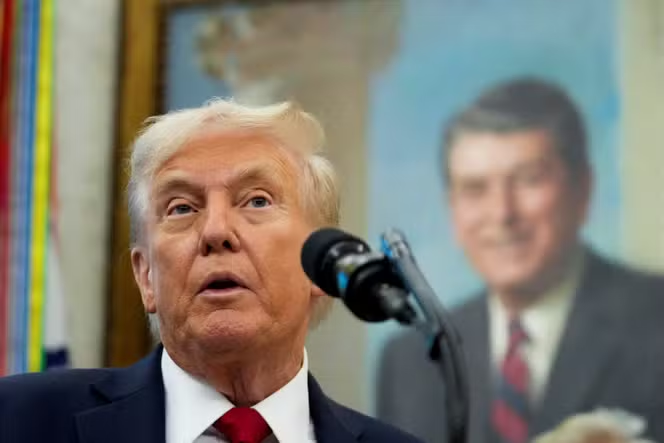Copyright breezyscroll

A U.S. federal judge in San Francisco has indefinitely barred the Trump administration from proceeding with layoffs of federal workers during the ongoing government shutdown, which is now the second-longest in American history. The injunction, issued by District Judge Susan Illston, comes after unions accused the White House of politically motivated “reductions in force.” The ruling is a major setback for President Trump as the standoff between the White House and Congress continues to paralyze key government operations. What the court ruling means Judge Susan Illston issued a preliminary injunction on Tuesday, blocking the Trump administration from terminating federal workers amid the shutdown. The ruling replaces a temporary restraining order she had previously granted, which was due to expire on Wednesday. Illston stated that available evidence suggests the mass firings likely violated federal law and exceeded the administration’s authority. This decision effectively freezes all ongoing layoffs, ensuring federal employees cannot be dismissed while the American Federation of Government Employees (AFGE) and several labor unions pursue their lawsuit against the administration. “The evidence indicates the layoffs were politically motivated and executed without lawful justification,” Illston said during the hearing. Why the Trump administration tried to cut federal jobs The Trump administration defended the job cuts, arguing they were necessary to reduce spending during the shutdown and to target departments that the administration claims are “bloated” or politically biased, such as Education and Health and Human Services. Officials described the move as a “reduction in force,” not a punitive action, saying it was aimed at trimming nonessential staff until funding is restored. However, the layoffs have sparked widespread backlash for several reasons: Timing: Notices were sent out while many employees were furloughed and unable to access work emails. Execution: Some workers were called back without pay just to receive termination letters. Motivation: Unions argue the cuts were designed to pressure Congress and punish Democratic-leaning agencies. So far, more than 4,100 layoff notices have reportedly been issued since October 10. What the unions argued in court The AFGE and other labor groups filed suit claiming the firings violated civil service protections and amounted to political retaliation. They argued that federal law prohibits large-scale dismissals during a government shutdown unless authorized by Congress, an authority the administration does not have. Union lawyers also warned that these actions could set a dangerous precedent, allowing future administrations to use shutdowns as leverage to reshape the federal workforce. “This was not about budget control—it was about political control,” one AFGE representative said outside the courthouse. The shutdown’s growing toll on the U.S. government Now in its fourth week, the shutdown has become the second-longest in U.S. history, following the 35-day shutdown of 2019, also under Trump’s presidency. This time, the standoff stems from a deadlock between the White House and Congress over budget allocations and healthcare policies. Key impacts so far: SNAP funding: The administration said it will not use the $5 billion in contingency funds to sustain food assistance beyond November. Public health: Ongoing cuts are affecting departments overseeing Medicaid and public health programs. Federal services: Thousands of workers remain unpaid or furloughed, straining essential services. The political standoff in Washington The impasse has deepened divisions in Washington. Democrats demand that any agreement to reopen the government must include renewed healthcare subsidies and a reversal of Medicaid cuts introduced under Trump’s latest tax and spending package. Republican House Speaker Mike Johnson has refused to negotiate until Democrats agree to reopen the government without preconditions. This deadlock has left millions of Americans facing disruptions in critical federal programs, while the political blame game intensifies. Historical parallels and implications This is not the first time a Trump-era shutdown has led to court intervention. In 2019, the longest government shutdown in U.S. history also prompted lawsuits over withheld pay and furlough policies. However, this current injunction marks one of the strongest judicial rebukes yet against Trump’s efforts to manage—or leverage—the shutdown through administrative power. If the court ultimately rules against the administration, it could limit future presidents’ ability to alter the federal workforce during funding lapses. What happens next The Justice Department is expected to appeal Judge Illston’s injunction in the coming days. Meanwhile, the lawsuit by AFGE and other unions will proceed in district court. If upheld, the ruling could force the administration to reinstate laid-off employees and potentially compensate furloughed workers for improper dismissals. The ongoing shutdown, coupled with the injunction, adds pressure on both the White House and Congress to resolve as federal agencies continue to struggle with crippling operational shortages.



